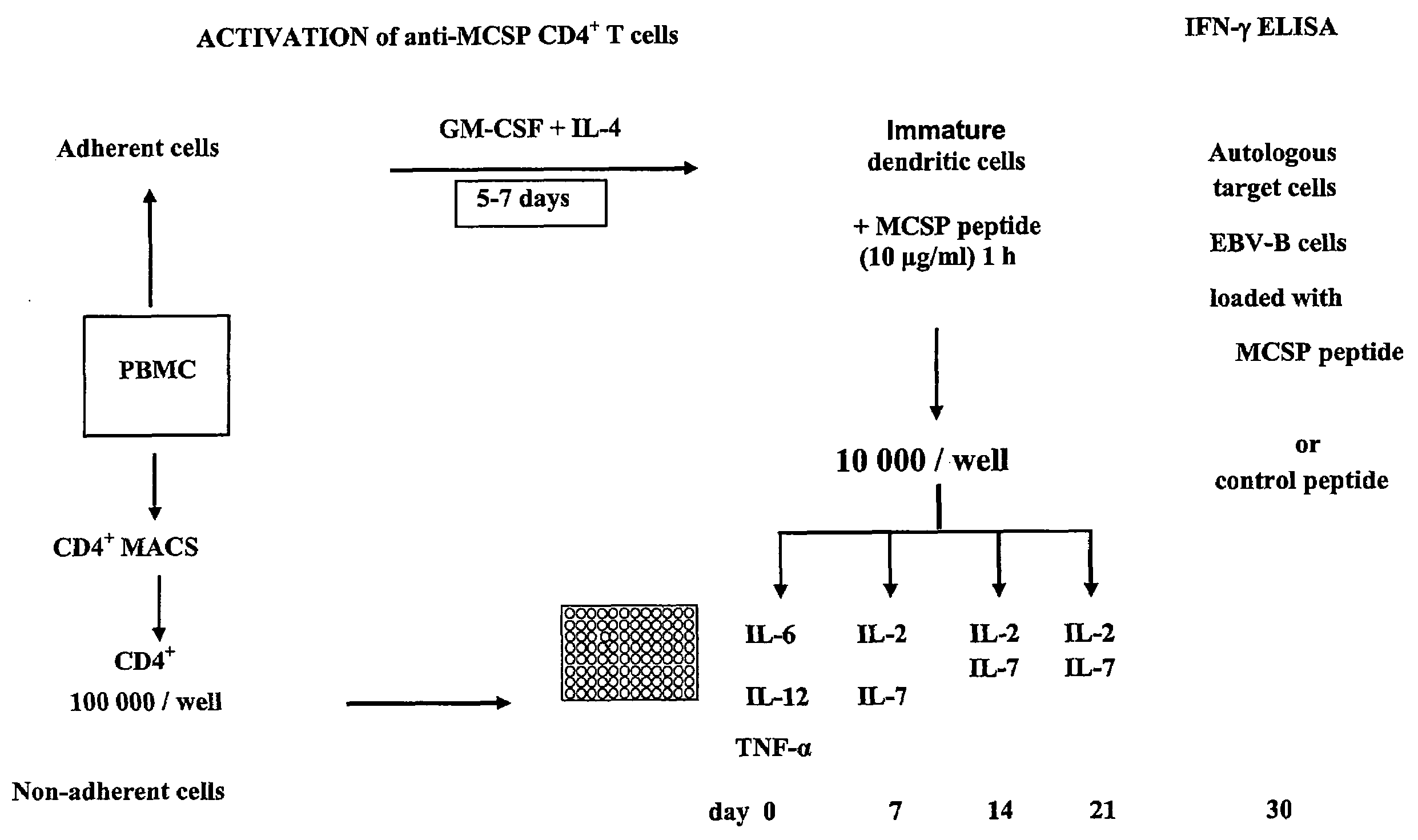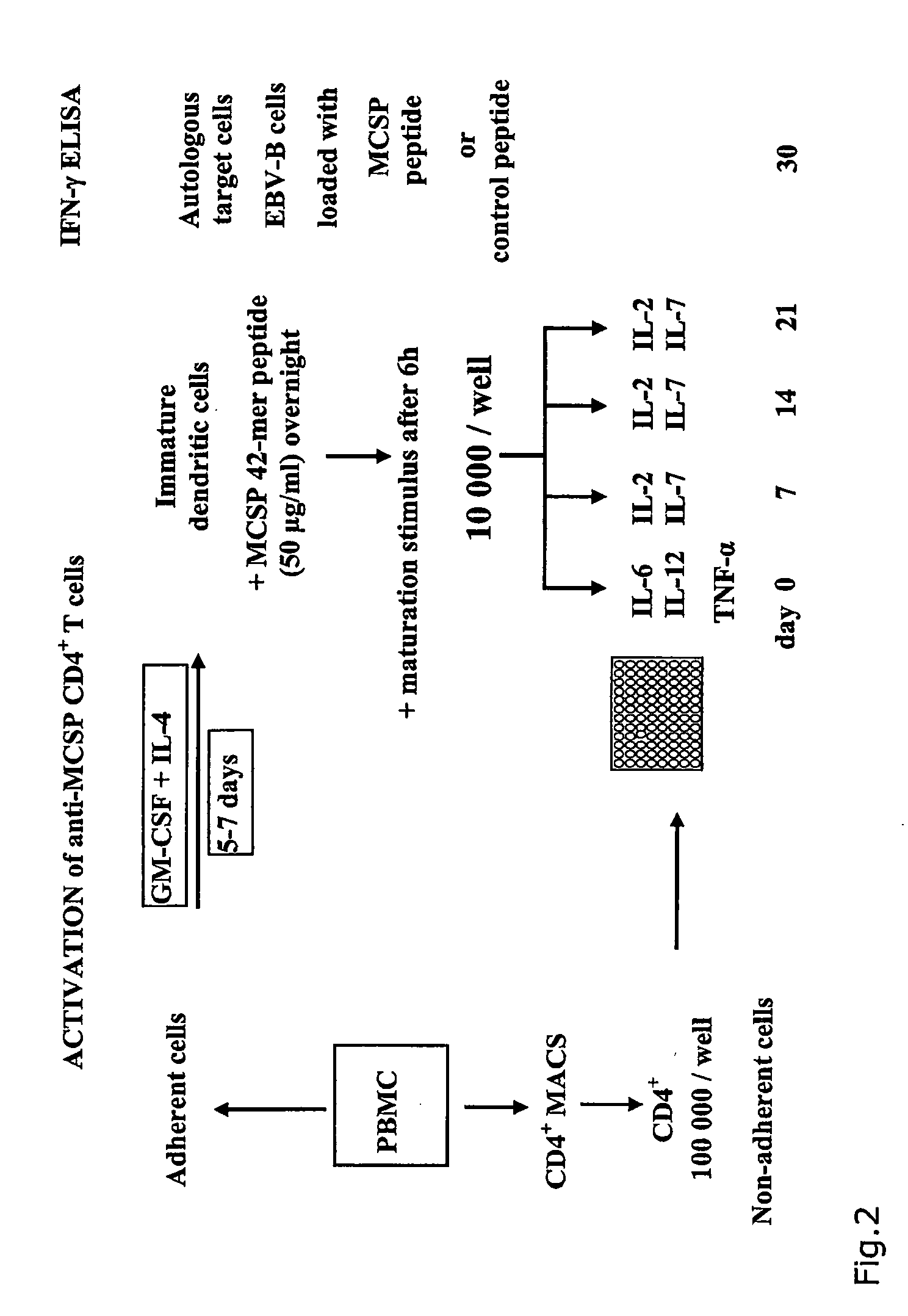T-Cell Stimulatory Peptides From The Melanoma-Associated Chondroitin Sulfate Proteoglycan And Their Use
a chondroitin sulfate proteoglycan and melanoma-associated technology, which is applied in the field of t-cell stimulatory peptides from the melanoma-associated chondroitin sulfate proteoglycan and their use, can solve the problems of ineffectiveness and inability to achieve in vitro promising results
- Summary
- Abstract
- Description
- Claims
- Application Information
AI Technical Summary
Benefits of technology
Problems solved by technology
Method used
Image
Examples
examples
[0123]1. Computer Algorithms: The complete MCSP core protein sequence was screened by computer algorithms (http: / / www.uni-tuebingen.de / uni / kxi, using the database SYFPEITHI). Various HLA I / II alleles were chosen, inter alia DR 0101, DR 0301, DR 0401, DR 0701, DR 1101, DR 1501. Candidate peptides were predicted for the various DR molecules.
[0124]2. Peptid synthesis: Peptides were synthesized using F-moc for transient NH2-terminal protection and were characterized using mass spectrometry. All peptides were >80% pure as indicated by analytical HPLC. Lyophilized synthetic peptides were dissolved in DMSO (Merck) / acetic acid (10 mM) and stored at −20° C. Peptides were purchased from Coring System Diagnostix GmbH (Gernsheim, Germany).
3. Preparation of Peptide Loaded Mature DCs and CD4+ T-Cells:
[0125](a) Isolation of immature DCs and CD4+ T-responder cells: Peripheral blood mononuclear cells (PBMCs) were isolated from leukapheresis products obtained from healthy donors after informed consen...
PUM
| Property | Measurement | Unit |
|---|---|---|
| concentration | aaaaa | aaaaa |
| exposure time | aaaaa | aaaaa |
| exposure time | aaaaa | aaaaa |
Abstract
Description
Claims
Application Information
 Login to View More
Login to View More - R&D
- Intellectual Property
- Life Sciences
- Materials
- Tech Scout
- Unparalleled Data Quality
- Higher Quality Content
- 60% Fewer Hallucinations
Browse by: Latest US Patents, China's latest patents, Technical Efficacy Thesaurus, Application Domain, Technology Topic, Popular Technical Reports.
© 2025 PatSnap. All rights reserved.Legal|Privacy policy|Modern Slavery Act Transparency Statement|Sitemap|About US| Contact US: help@patsnap.com



